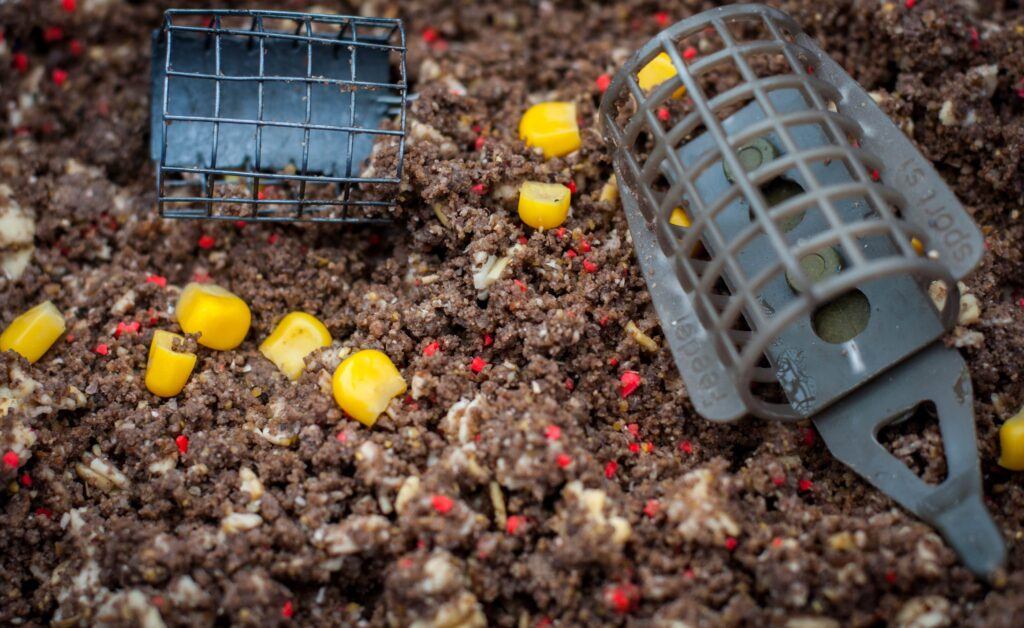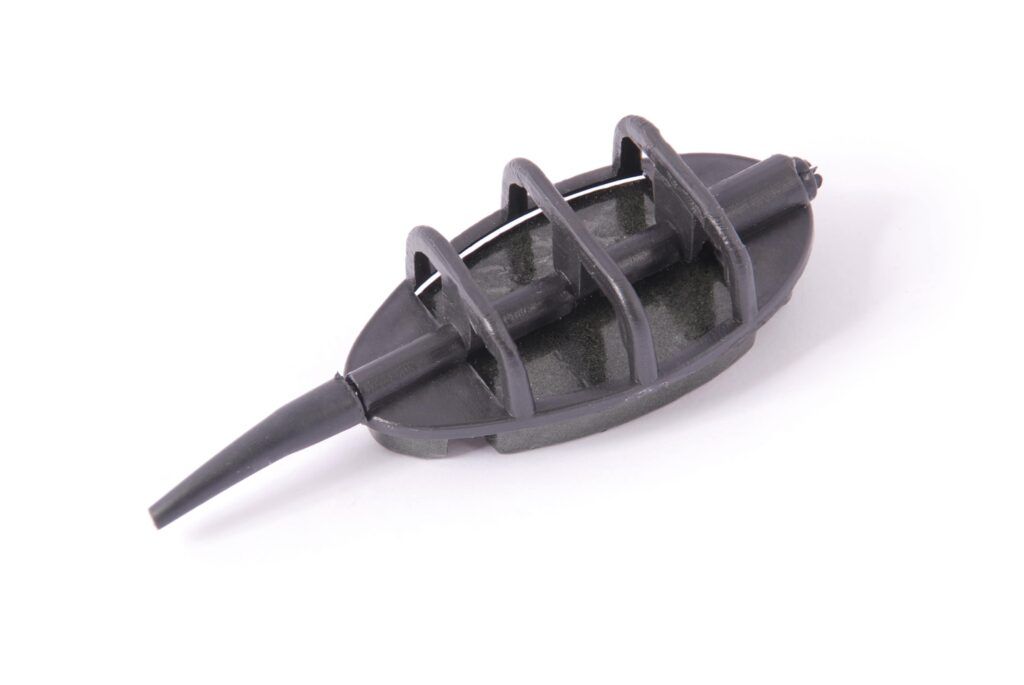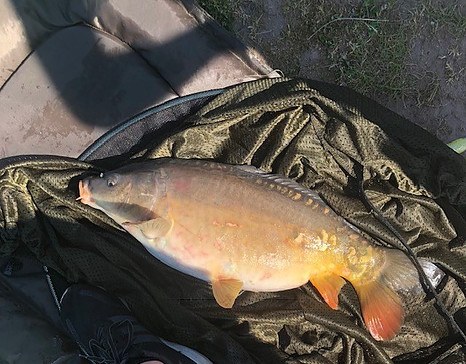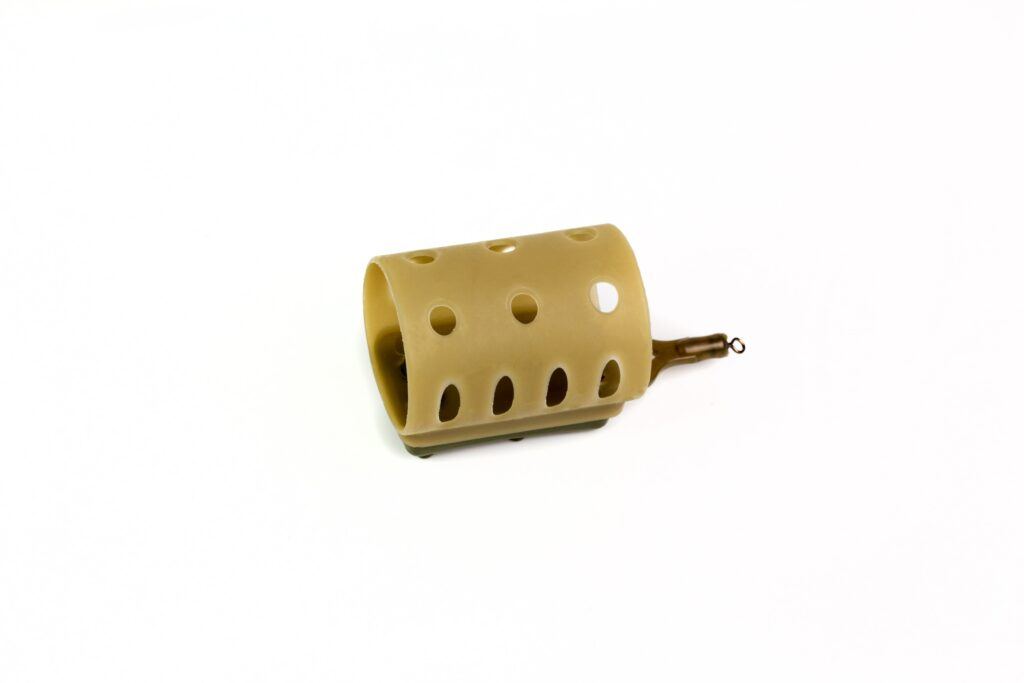
If you ask “What is feeder fishing?” now is the time to find out!
Feeder fishing for carp can provide, when done right, many exciting and action-packed days on the banks; that’s what we all want right?
Feeder fishing can be an extremely productive way to catch all sizes of carp and will be the most common method you’ll see on the banks of your local commercial fisheries.
Feeder fishing is a relatively simple method; doing the basics just right will work time and time again.
Within this post ill go over the types of feeder fishing you can try, the basic method behind feeder fishing, why everyone should know how to feeder fish and what you’ll need to get started.
It isn’t difficult if you follow the simple steps in this guide. I can guarantee you’ll be well-informed after taking ten minutes to have a good read.
Types of Feeder
There are four feeders used today each with its benefits and uses.
Deciding on which feeder to use will mostly depend on what bait you are planning to use and the style of fishing you are looking for.
The size and weight of your feeder will depend on how much bait you want to cast out, weather conditions and how far you need to cast.
Large feeders allow you to send out larger amounts of bait on each cast.
Heavier weights will let you cast further on larger lakes but be sure to match the feeder weight with your rod.
Rods with lighter action will struggle to cope with heavy feeders especially with the fine quiver tip ends.
Heavier feeders will also stick better if you are fishing slopes on the lake bed and stop them from sliding your hook bait away from your baited swim.
Method Feeder

A method feeder is a great tool for sending out micro pellets or ground bait packed around your feeder.
Method feeders are my go-to on any commercial carp fishing water, and I’m sure the majority of anglers will be thinking the same.
Method feeders usually come with a mould which ensures you are consistent with the amount of bait you pack around your feeder.
This will ensure the weight in every cast is near exact enough which will help with casting accuracy as the same power is needed to hit that sweet spot in your swim time and time again.
I feel method feeders fix themselves on the lake bead more effectively stopping them from drifting away from your patch of freebies and taking your hook bait with it.
Setting up an inline method feeder can be quick and easy using quick change beads and pre-tied hair rigs.
When fishing the method feeder, I’ll keep hook lengths on the short side to ensure my hook bait never drifts from the baited swim.
If you are looking for an in-depth explanation of setting up your method feeder rig, have a read at my step-by-step guide for setting up a method feeder rig.

Open Ended Feeder
Open-ended feeders can be used in a slightly different way. Instead of packing micro pellets or ground bait into your feeder near enough anything can be concealed inside with end caps of ground bait, whether it be pellets, sweetcorn, small boilies or even maggots.
This will ensure all your bait will stay inside your feeder on the cast but as soon as it hits the water and the ground bait starts to break down in the water the bait is left free to come out either end.
That being said, open-ended feeders are effective for fishing with only ground bait if you please. In deeper waters they will keep your ground bait intact until your feeder hits the bottom, or at least that’s what we hope.
Cage Feeder

The cage feeder works similar to the open-ended feeder other than your bait will start to break up sooner in the water.
Sweetcorn maggots micro pellets or chopped worms can be mixed into your ground bait and then packed into your feeder. I’d advise you not to use a cage feeder if you plan to fish deeper waters.
If this is the case, your bait will most likely break up before your feeder reaches the lake bed.
That being said cage feeders provide an excellent way to create a cloud of your ground bait as the feeder falls attracting carp into your swim.
Maggot Feeder
The maggot feeder or block end feeder as it’s sometimes called does exactly as you would expect.
The maggot feeder has a closed end with holes drilled across the body. This allows maggots to be piled into the feeder where they will slowly wriggle themselves free attracting the carp and other fish in.
When using the maggot feeder it’s hard to not draw in “nuisance” fish which will hoover up all your freebies before the carp even get a chance to take your hook bait.
Using maggot feeders will be my go-to in the winter months when the carp tend to be pickier as their metabolism slows down. Natural baits seem to do the trick more often than not.
How to Feeder Fish?

Like I was saying at the start of this post feeder fishing can provide many exciting days on the bank no matter the time of year.
Of course, the warmer months will seem easier when the carp are more active and feeding more freely but if you are willing to brave the cold in search of that rush catching carp provides then the maggot feeder could be your answer.
No matter what type of feeder you choose to tie on the principle is still the same. Feeder fishing all comes down to baiting up a very precise area, a swim as it’s called in the fishing world, to attract the carp in where your hook bait will be presented.
This way of fishing is intended to keep carp in the area as they pick away all the freebies deposited at the bottom of the water.
Feeder fishing provides an excellent way to take fresh bait to your swim every cast even to areas out of throwing or catapult reach.
Choosing a Swim
In the summer months, the carp will usually be found closer to “features” which can range from reed bed, margins, overhanging trees, lilly pad beds or even branches in the water.
The carp will be found close to these features as this is where cover is provided and they feel most safe. Also, look for places where there isn’t a lot of pressure from other anglers.
Many anglers overlook the margins, but some of the biggest fish can be found here looking for natural food sources or bait dumped in by anglers.
Another general rule is to follow the wind where natural food sources will be blown into the water attracting the carp.
In the winter months finding fish can be a lot more difficult as the fish become less active
On days when the temperature has been low for a good few consecutive days the carp can usually be found grouped up in deep holes in the water.
On cold sunny days, you might potentially find carp in the shallower water where the sun has warmed the top layer of water slightly.
During the cold months don’t be afraid to change swims quite often until you find the fish.
Accurate Casting
When feeder fishing it is essential your casting is accurate. If you are casting to different spots every time you’re are fishing nowhere as effective as you could be.
Yes, you might get lucky and cast right on top of the odd carp but wouldn’t you rather turn into a game of skill rather than luck?
To ensure I am casting to the same spot every time I pick a “feature” directly in line with my swim. For example, I will pick a tree on the far bank so I know what direction it should be casting every cast.
Once I have cast to my chosen swim, I will use the line clip on my reel to ensure I am casting to the correct distance every time.
Casting is not as easy as it sounds and comes with lots of practice so don’t worry if you’re not getting your cast bang on every time.
Tackle for feeder fishing

Before you give feeder fishing, you are going to need the right tackle. Obviously, you are going to need to get yourself a handful of feeders. Make sure you take a few on the day to ensure you have a few replacements if you snag and snap off or snap off on a monster fish.
Make sure your feeder is free on your line so if, worst comes to worst, you snap off on a fish the fish is not dragging around the feeder as it will just slide off the line.
First of all, you’re going to need a feeder rod. Feeder rods or sometimes referred to as “quiver-tip” rods are rods with very fine end sections that are used for bait detection.
Every nibble or tap of your line makes your rod tip bend and shake slightly alerting you to when the carp are in the area.
Quiver-tips come with “quivers” of varying sizes usually ranging from 1oz to 3oz. What quiver you opt to use will depend on the weather conditions and what size of fish you are targeting.
On windier days I’d always opt for the stiffer of the three to try to stop the wind from bending and moving your rod tip which could be mistaken as a bite.
You can buy a great quiver-tip rod for as little as £65. One of my personal favourites is the “Daiwa Yank n Bank” which I’d recommend to the experienced and beginner angler alike. Have a read at my review if you fancy hearing more about it.
Once you have found yourself a decent feeder rod you are going to need to get yourself a reel to go with it.
What reel you choose to go for will depend on many factors. What size of fish you plan to target, casting distance and budget. Generally, a fixed spool will be all you are looking for.
The Daiwa Ninja reel proves an excellent choice that won’t break the bank.
Give it a go
Now you’ve got an idea of what feeder fishing is you really have no excuse not to give it a go. Feeder fishing can be one of the most productive commercial water methods, regardless of the feeder rig you choose to use. If you follow the simple steps above, I can guarantee you will be into some decent fish before long.
If you still have some questions regarding feeder fishing feel free to leave them in the comments below and I’ll be happy to help anyone.



